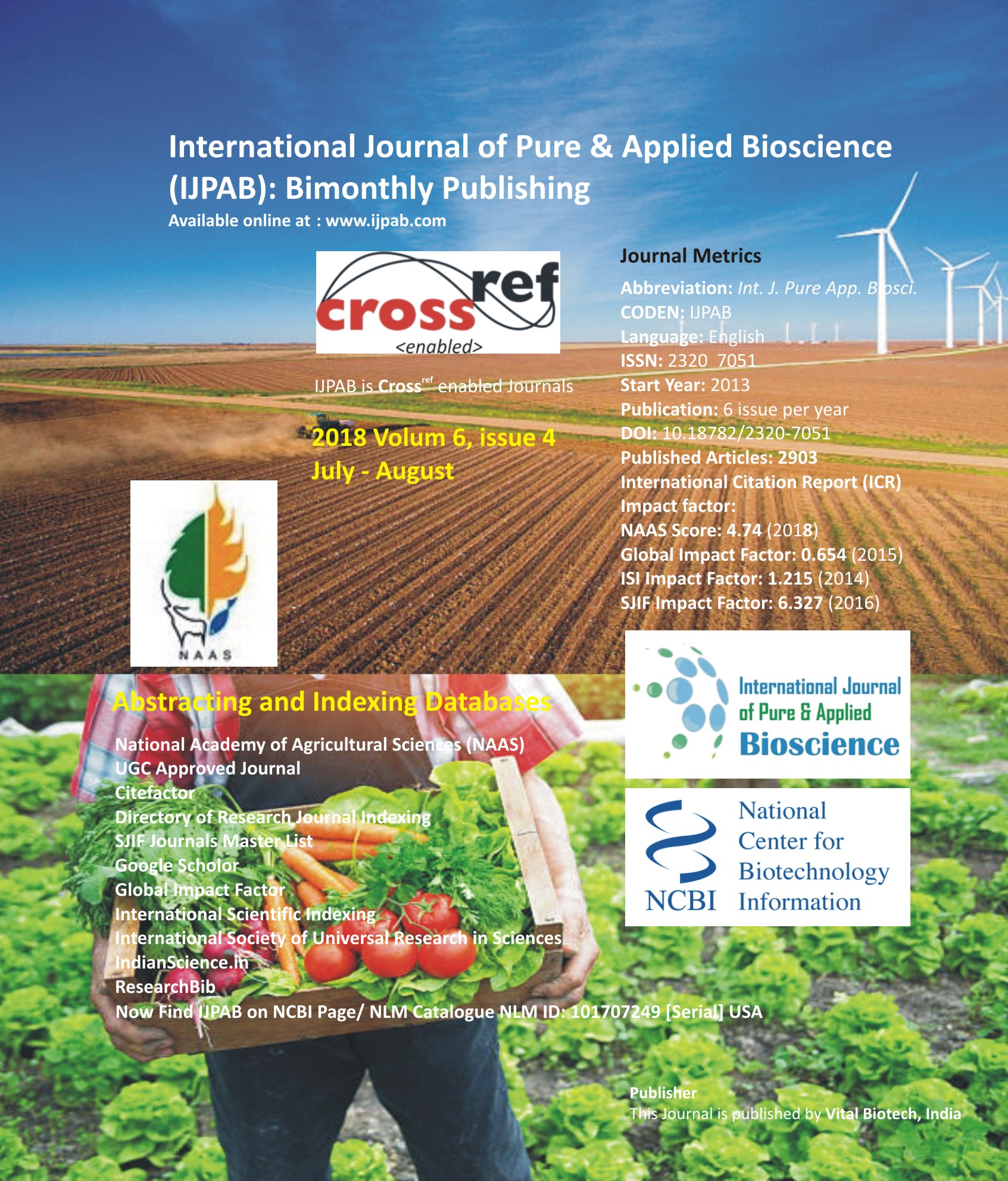
-
No. 772, Basant Vihar, Kota
Rajasthan-324009 India
-
Call Us On
+91 9784677044
-
Mail Us @
editor@ijpab.com
International Journal of Pure & Applied Bioscience (IJPAB)
Year : 2018, Volume : 6, Issue : 4
First page : (141) Last page : (144)
Article doi: : http://dx.doi.org/10.18782/2320-6494
Development of a Test for Measuring the Knowledge Level of Farmers in Paddy Cultivation
Lalit Kishor*, Indu Swarup, Anju Nehra, Girraj Kirar and Rajesh C. Jeeterwal1
Department of Plant Breeding and Genetics, College of Agriculture
(RajmataVijayaraje Scindia Krishi VishwaVidyalaya), Indore
1Division of plant Breeding and genetics, Rajasthan agricultural research institute
(SKN Agiriculture University), Durgapura, Jaipur
*Corresponding Author E-mail: lalitkishor091@gmail.com
Received: 19.05.2018 | Revised: 25.06.2018 | Accepted: 3.07.2018
ABSTRACT
The present field experiment was conducted with forty chickpea genotypes, raised in randomized block design with three replications during rabi season of 2015-16 at field of regional research centre on pulses, College of Agriculture, Indore (M.P.). The observations were recorded on days to 50% flowering, days to maturity, plant height, lower branch height, number of primary branches per plant, number of pods per plant, number of seeds per pod, number of seeds per plant, biological yield per plant, 100-seed weight, harvest index and seed yield per plant from five competitive plants selected randomly from in each replication for collecting the information on existing genetic variability, heritability, expected genetic advance. The analysis of variance revealed highly significant differences among genotypes for all the characters study. Number of pods per plant followed by biological yield per plant, number of seeds per plant, seed yield per plant, number of primary branches par plant, 100-seed weight had high phenotypic and genotypic coefficient of variation. The characters viz., days to 50% flowering, days to maturity, 100 seed weight, plant height, number of seeds per plant, lower branch height, number of pod per plant, biological yield per plant, seed yield per plant, number of primary branches per plant and harvest index showed least differences among GCV and PCV estimates. The estimates of heritability in broad sense for most of the traits were low to high. High estimates were observed for number of seeds per plant (96.90%) followed by number of pods per plant, 100 seed weight, biological yield per plant, days to 50% flowering, plant height, lower branch height, days to maturity, seed yield per plant, number of primary branches per plant, while harvest index, number of seeds per pod registered the low heritability. Number of pods per plant, biological yield per plant, number of seeds per plant, seed yield per plant and number of primary branches per plant have high values of heritability coupled with high genetic advance as per cent of mean.
Key words: Chickpea, Cicer arietinum, Genetic Variability, Heritability, Genetic advance.
Full Text : PDF; Journal doi : http://dx.doi.org/10.18782
Cite this article: Kishor, L., Swarup, I., Nehra, A., Kirar, G. and Jeeterwal, R. C., Genetic Variability, Heritability and Genetic Advance Analysis in Chickpea (Cicer arietinum L.), Int. J. Pure App. Biosci.6(4): 141-144 (2018). doi: http://dx.doi.org/10.18782/2320-7051.6494

